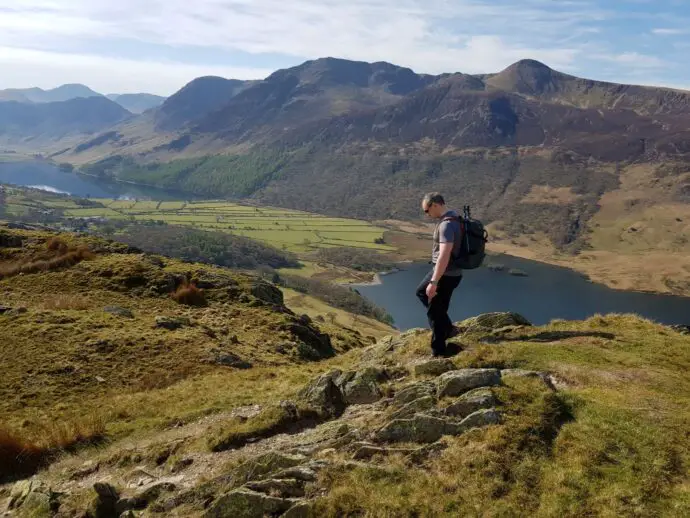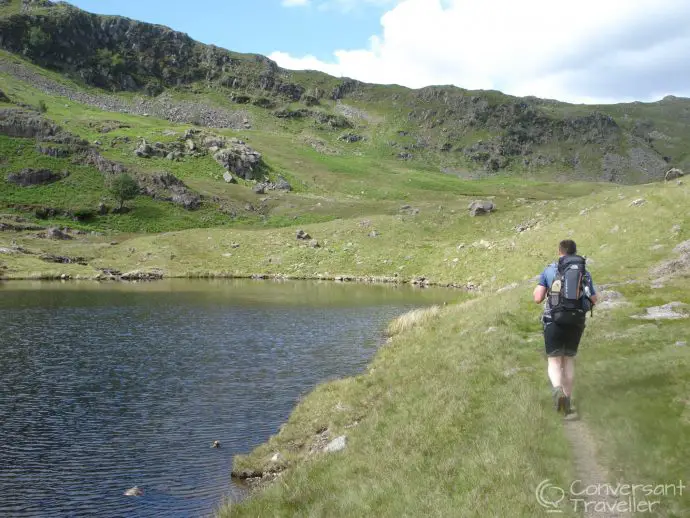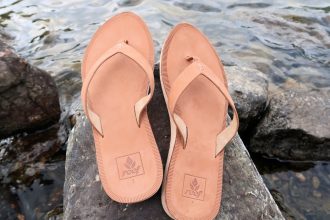Essentials of Backpack Fabrics
Picking the right fabric for your backpack can make or break your travel experience. Let’s explore the key factors to consider when choosing backpack materials.
Characteristics of Common Materials
Nylon is a popular choice for backpacks. It’s lightweight, strong, and resists wear and tear well. You’ll often see it in hiking and everyday bags.
Polyester is another common option. It’s less expensive than nylon but not as durable. Still, it works well for casual use and school backpacks.
Canvas gives a classic look. It’s tough and can last for years with proper care. Canvas bags are heavier than synthetic options, though.
Robic nylon offers extra strength as it resists tears more effectively than nylon. You might find it in high-end outdoor gear.
Understanding Fabric Weights and Durability
Fabric weight is measured in denier (D). Higher numbers mean thicker, stronger fabric.
Light fabrics (under 500D): Good for day packs and ultralight hiking. Medium fabrics (500D-1000D): Ideal for most travel and everyday use. Heavy fabrics (over 1000D): Best for rugged outdoor activities.
Durability isn’t just about weight. The weave and coating matter too. Ripstop fabrics have a special grid pattern that stops tears from spreading.
Heavier doesn’t always mean better. Think about your needs and how you’ll use the bag.
Weatherproofing and Water Resistance Options
Most backpacks have some water resistance. But for true protection, look for these features:
- DWR (Durable Water Repellent) coating: Causes water to bead up and roll off.
- PU (Polyurethane) coating: Creates a waterproof layer inside the fabric.
- Sealed seams: Prevents water from seeping through stitching.
For extreme conditions, consider waterproof fabrics like:
- Dyneema Composite Fabric (DCF): Ultra-light and fully waterproof.
- X-Pac: A layered fabric with excellent water resistance.
These options cost more but offer top-notch protection for your gear. Choose based on your travel plans and budget.

Selecting the Right Fabric for Your Needs
Picking the best backpack fabric depends on how you plan to use it. Different activities and environments call for exact materials when it comes to choosing travel rucksacks. Let’s look at fabric choices for three common traveller types.
For the Urban Explorer
City travelers need a backpack that’s stylish and practical. Look for fabrics that are:
• Durable enough to handle daily use • Easy to clean • Resistant to light rain
Nylon is a great choice as it’ss strong, lightweight, and dries quickly. Lots of urban rucksacks are made out of a combination of nylon and polyester.
Canvas is another good option. It looks nice and can handle rough treatment. But it’s heavier than nylon.
For extra safety, pick a fabric with reflective strips. This helps drivers see you at night.
For the Wilderness Trekker
Outdoor adventures like wild camping and trekking require tough, weatherproof fabrics. Your backpack needs survive rain and moisture, rough terrain and extended wear and tear.
Ripstop nylon is ideal for rugged trips. It’s very strong and resists tears. Many high-end outdoor packs use it.
Look for fabrics with a high denier count. This means they’re thicker and more durable. A count of 600D or higher is good for tough conditions.
Water-resistant coatings are a must. They help keep your gear dry in light rain. For serious weather, consider a fully waterproof fabric like Dyneema Composite Fabric (DCF).
For the Casual Day-Tripper
Day trips call for a balance of comfort and function. You want a fabric that is easy to look after and lightweight. Polyester is a popular choice. It isn’t heavy, it’s not too expensive, and often dries quickly if it’s wet.
Lightweight nylon blends work well too. They offer a good mix of strength and comfort. Look for padded straps and back panels. These make your pack comfy to wear all day.
Avoid heavy fabrics like thick canvas. They can make your pack too hot and bulky for short trips.
Ergonomics and Comfort
A well-designed backpack can make your travels much more pleasant. The right features help distribute weight evenly and reduce strain on your body. Let’s explore some key elements that contribute to backpack comfort.
Breathability and Moisture Wicking
Your back can get sweaty when carrying a pack. Look for backpacks with mesh panels on the back and straps to aid air circulation – a great way to keep cool.
Some packs use special fabrics that pull moisture away from your skin. This helps you stay dry and comfortable, even on long hikes or in hot weather.
Ventilated back panels create space between the pack and your back. This gap lets air flow freely, reducing heat buildup. Many high-end travel packs now include this feature.
Padding Materials and Placement
Soft, dense foam in key areas makes a big difference in comfort. Check for padding on the shoulder straps, back panel, and hip belt.
Memory foam molds to your body shape. It provides excellent cushioning without adding bulk. Some packs use gel inserts for extra comfort on pressure points.
Look for ergonomic designs that follow the curves of your spine for good posture. Padding placement should match your body’s natural contours.
Strap Design and Load Distribution
Wide, S-shaped shoulder straps spread weight across your shoulders. This prevents digging and reduces pressure on any one spot, which is particularly important on multi-day hikes. Adjustable sternum straps help stabilize the load.
A padded hip belt transfers weight to your hips. This takes stress off your shoulders and back. Make sure it sits comfortably on your hip bones.
Load lifter straps pull the top of the pack closer to your body. This improves balance and keeps weight close to your center of gravity. Proper adjustment is key for comfort on long trips.

Sustainability and Fabric Choices
Picking eco-friendly fabrics for your backpack can make a big difference. Smart choices help protect the planet and create high-quality gear that lasts.
Eco-Friendly Material Innovation
New sustainable fabrics are changing the backpack game. Hemp is a great option. It needs little water to grow and can absorb lots of CO2. This makes it kind to the planet.
Piñatex is another cool choice. It’s made from pineapple leaf fibers. This fabric uses parts of the plant that would otherwise go to waste. It looks and feels like leather but is much better for the environment.
Some companies are even making fabrics from recycled plastic bottles. These materials keep trash out of oceans and landfills.
Recycled and Upcycled Options
You can find backpacks made from old materials given new life. Recycled cotton is popular. It saves water and energy compared to growing new cotton.
Some brands use scraps from clothing factories to make backpacks. This cuts down on waste. You might even find unique one-of-a-kind bags made this way.
Used truck tarps and billboards can become tough, waterproof backpacks. These materials would end up in the trash, but instead make durable bags.
Certifications and Standards
Look for backpacks with eco-labels to know they’re truly green. The Global Organic Textile Standard (GOTS) is a good one for organic fabrics.
For animal-free options, check for PETA-approved vegan certifications. The bluesign® system is another helpful standard. It ensures the whole production process is safe for workers and the planet.
These labels can help you pick a backpack that matches your values. They show the maker cares about doing things right.
Care and Maintenance of Backpack Fabrics
Taking good care of your backpack fabric keeps it looking great and lasting longer. Regular cleaning, quick repairs, and proper storage are key to maintaining your pack.
Cleaning Techniques
Clean your backpack regularly to keep it fresh. Start by emptying all pockets and shaking out loose dirt. Use a soft brush to remove stuck-on grime. For deeper cleaning, fill a tub with lukewarm water and mild soap. Submerge your pack and gently scrub with a soft cloth.
Pay extra attention to straps and zippers, and rinse thoroughly to get rid of all the soap. Don’t use harsh chemicals or put your backpack in a washing machine.
Hang your rucksack out to dry before putting it away. Never use heat to dry it, as this can damage the fabric and waterproof coatings.
Repairing Tears and Damage
Quick repairs can prevent small issues from becoming big problems. For tiny holes, use a fabric patch or repair tape designed for backpacks.
For larger tears, consider sewing. Use a sturdy needle and thread that matches your pack’s colour.
Tip: Take a repair kit when you go away, just in case. Include patches, thread, and a needle for emergency fixes.
For broken zippers or straps, you may need professional repair. Many outdoor stores offer this service.
Long-Term Storage Solutions
Proper storage keeps your backpack ready for your next adventure. Clean and dry your pack completely before storing. Stuff it lightly with newspaper to help it keep its shape.
Don’t store your rucksack in direct sunlight. Avoid damp basements or hot attics. Hanging your pack reduces stress on the fabric and straps.
Before long trips, check your stored backpack for any signs of mold or weird smells. Air it out if needed. This helps ensure your pack is always ready to go when you are.

Customization and Personalization
Make your backpack truly yours with fun and practical customization options. You can add personal flair and useful features to create a one-of-a-kind travel companion.
Dyeing and Printing on Different Fabrics
Canvas backpacks are easy to dye or paint. You can use fabric dyes for an all-over color change or fabric paints for designs. Nylon backpacks work best with special nylon dyes.
For printing, use iron-on transfers or screen printing. These methods work on both canvas and nylon. Pick designs that match your style.
Test dyes and paints on a small hidden area first. This helps you check the color and how well it sticks to the fabric.
Embroidery and Applique
Add texture and color with embroidery or applique. For canvas backpacks, use a sturdy needle and embroidery floss. Create simple designs or complex patterns.
Applique involves sewing fabric shapes onto your backpack. Cut out designs from colorful fabric and attach them with a sewing machine or by hand.
Nylon backpacks can be trickier to embroider. Use a special needle and go slowly to avoid damaging the fabric. Patches are a great option for nylon – just iron them on or sew them in place.
Adding Functionalities with Pockets and Compartments
Boost your backpack’s usefulness by adding extra pockets. Sew on small fabric pouches for easy access to items like your phone or keys.
Create internal dividers with fabric panels. This helps keep your stuff organized. Use sturdy fabric that matches your backpack’s material. You can add a water bottle holder too – it’s easy to do by using a piece of mesh. Put a lockable zip on it so it doubles as a secure place for documents.
Finally, reinforce any new additions with extra stitching. This helps them last longer and stand up to daily use.





